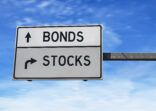Walsh, the co-manager of the Strategic Income Fund (renamed from the Global Unconstrained Bond Fund), said the macroeconomic environment remains supportive for fixed income. Central banks are still accommodative and there is a huge amount of liquidity in bonds.
“Corporates that want refinancing or getting financing for first time find it relatively easy to do and a strong technical factor is a lot of cash on the sidelines. Every time there’s a little dip in fixed income asset prices, this cash comes in and those dips are shallow.
“The big difference is that valuations are more stretched than at the beginning of 2017, so we are a little more cautious and defensive. These conditions will remain in place and we are taking advantage of any further dislocation.”
He also believes the UK and the EU do not have necessary conditions to tip into recession, though the US is more at risk with higher corporate and consumer leverage and more issuance of triple C bonds.
“But the US doesn’t have spread widening or tighter monetary policy yet. The biggest risk is a shock out of somewhere that would move markets. At the moment it is difficult to see where that comes from.”
Fund minus benchmark
Walsh’s fund is long-only fixed income and is run using an unconstrained strategy – there is no benchmark. “We have total flexibility to make decisions and are able to operate throughout the credit cycle.”
To measure alpha of the benchmark-less fund, comparisons are made to the Barclays Global Aggregate Index and the peer fund sector, he said.
The fund does have bookends it operates within, Walsh said. “We would never have negative duration bonds, for example. That’s a hedge fund-type strategy. At some stage it would pay off well, but the timing needs to be absolutely correct. The primary mandate is generating an attractive level of income for investors.”
“The idea is that this is a simple fund and it should almost perform just like a bond would. It pays you income on a regular basis.”
Currently the yield is 4.5% in pounds (all bonds are hedged back to pounds sterling)
In terms of geography, the fund’s largest allocation is to developed markets, but in 2017 exposure to emerging markets was increased to 9% due to “very obvious coordinated global growth”. Walsh said the EM allocation has produced double-digit returns.
The fund typically has 150 line items, which he believes is different from peers.
“If a fund has 500 – 1000 line items, each individual bond isn’t going to make that big a difference. If you have 150, picking the right one can help you outperform.”
Risk controls
The manager can control interest rate duration risk by using interest rate swaps or by adding more treasuries or gilts, for example. He can also use risk control by buying the Markit iTraxx Europe Crossover Index, which contains the 75 most actively traded high yield bonds in Europe.
Last year as the Brexit referendum approached, the portfolio was stress-tested portfolio to figure out what might happen if Britain votes to leave the EU, he said.
“We decided volatility was too big to ignore, so we put a range of hedges in place to protect the portfolio. The portfolio went from nearly zero US treasuries to having 10% in long-dated treasuries. We added 10% holdings in the crossover index and put on a short in sterling versus the US dollar. We felt sterling would be the first place to be impacted.”
However, the adjustments over that period involved high turnover and changed the portfolio dramatically, he added.
“If something is happening and we need to position for it we must have the flexibility to do that.
The portfolio is tightly held, but is there a better bond out there we should hold? That drives a certain amount of turnover.”
The Strategic Income Fund versus the sector and the Bloomberg Barclays Global Aggregate Index

















